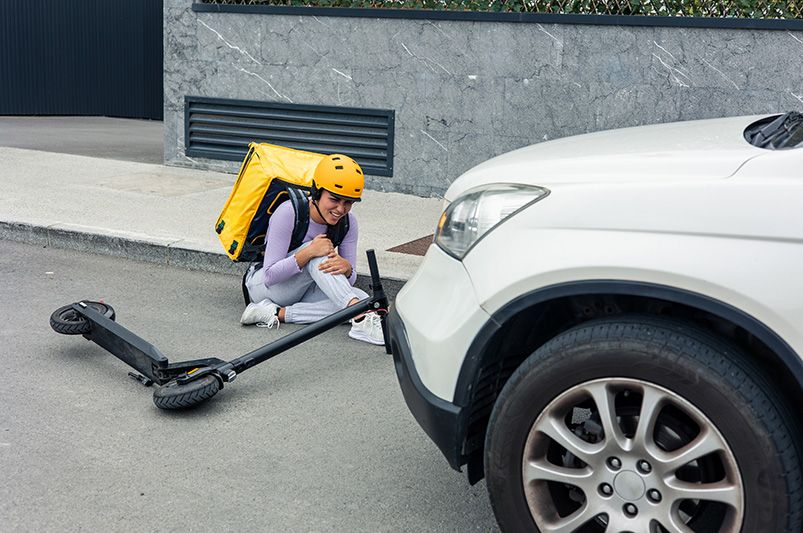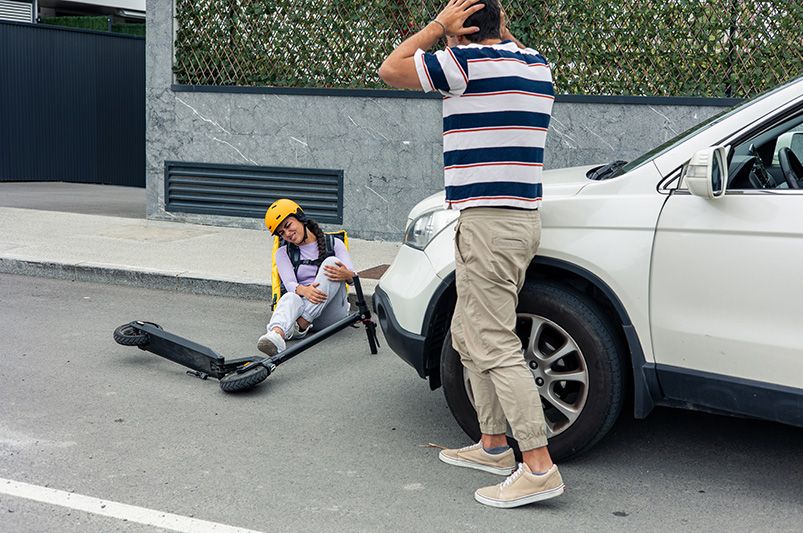Bicycle & E-Scooter Accidents in California: Rights, Evidence, and Insurance Claims
Published: 03/10/2025 | Updated: 03/10/2025
In California’s bustling cities and suburban streets, bicycles and e-scooters are everywhere—from commuters weaving through downtown traffic to college students zipping across campuses. These eco-friendly rides make life convenient, but they also come with risks. When accidents happen, knowing your legal rights, understanding how to gather evidence, and navigating insurance claims are crucial for protecting yourself.
This guide breaks down what to do after a crash, the laws that apply, how comparative negligence could affect your case, and why hiring an experienced bicycle accident California lawyer or a scooter accident attorney may be the difference between a denied claim and fair compensation.
The Rise of Bicycle & E-Scooter Accidents in California
California leads the nation in bike-friendly cities like San Francisco, Los Angeles, and San Diego. At the same time, e-scooters—offered by companies such as Bird, Lime, and Spin—have exploded in popularity. But with increased use comes increased injuries.
According to state data:
-
Thousands of cyclists and scooter riders are injured each year in California traffic accidents.
-
Riders are particularly vulnerable because they lack the protection that cars provide.
-
Collisions with vehicles, poor road conditions, or defective scooters are common causes.
If you’re injured, your path to recovery involves not only medical care but also understanding liability, insurance coverage, and your rights under California law.
California Laws on Bicycle & E-Scooter Use
Both bicycles and e-scooters fall under traffic laws, and riders must follow many of the same rules as drivers. Key points include:
-
Helmet Requirements: Minors must wear helmets. For e-scooter riders, helmets are mandatory for those under 18.
-
Where You Can Ride: Bicycles can use bike lanes or roads. E-scooters are prohibited on sidewalks but allowed in bike lanes.
-
Obey Traffic Rules: Stop signs, traffic lights, and right-of-way rules apply equally to cyclists and scooter users.
-
Speed Limits: Scooters cannot exceed 15 mph on public roads.
Understanding these laws matters because violating traffic rules could affect comparative negligence in your claim.
Understanding Comparative Negligence in California
California follows a pure comparative negligence system. This means:
-
You can still recover damages even if you were partly at fault.
-
Your compensation is reduced by your percentage of fault.
Example: If a car driver is found 80% at fault and you’re 20% at fault (say, for failing to use a bike light), and your damages total $100,000, you may still recover $80,000.
Because insurance companies often try to assign blame to riders, having legal support is vital.
What Evidence You Need After a Crash
The strength of your claim often depends on the evidence you collect immediately after the accident. Here’s what matters most:
Photos & Videos
-
Take wide shots of the scene.
-
Close-ups of bike/scooter damage and your injuries.
-
Capture road hazards (potholes, debris, faded bike lane markings).
Police Reports
-
Call the police and file a report.
-
Get the incident report number for your records.
Witness Statements
-
Collect names and contact details of anyone who saw the accident.
-
Witness accounts can counter biased or incomplete police reports.
Device Data
-
For scooters, apps track ride history, time, and GPS location.
-
Preserve this data—it can prove the scooter’s speed and location at the time of impact.
Medical Records
-
Get medical attention right away.
-
Document all diagnoses, treatments, and bills.

Insurance Claims: Who Pays After a Bicycle or Scooter Accident?
Determining liability and insurance coverage can be complex:
-
If a car driver caused the crash: Their auto insurance may cover your injuries.
-
If the scooter was defective: The scooter company or manufacturer may be liable under product liability.
-
If poor road conditions caused the accident: A city or government agency might be responsible.
-
If you share fault: Comparative negligence rules apply, but you can still recover damages.
Insurance companies are not on your side. Adjusters may attempt to downplay injuries, shift blame, or push for low settlements.
Why Legal Help Matters
Hiring a bicycle accident California lawyer or an attorney experienced in scooter accident claims is crucial for:
-
Investigating liability.
-
Preserving evidence before it disappears.
-
Negotiating with insurance adjusters.
-
Filing lawsuits if settlements aren’t fair.
With JusticeGuys, you don’t have to guess which lawyer to call—we help match you with the right attorney for your case.
Injured in a Bicycle or Scooter Accident in California?
Don’t navigate the complex insurance and legal system alone. JusticeGuys connects you with an experienced lawyer who understands bicycle and e-scooter accidents, comparative negligence, and California’s traffic laws.
Find a Lawyer Today with JusticeGuys and protect your rights.
Downloadable PDF - Free Crash Scene Evidence Checklist
What you do in the minutes after a crash can determine the strength of your claim. Our free checklist shows you exactly what to collect—photos, police reports, witness info, scooter data, and more—so your attorney has the evidence needed to build a strong case.
FAQs
Q1: Do I need a lawyer after a bicycle or e-scooter accident in California?
A1: Yes. A lawyer can help you prove liability, handle comparative negligence issues, and deal with insurance adjusters.
Q2: What if I was partly at fault in my accident?
A2: Under California’s comparative negligence law, you can still recover damages, but your compensation is reduced by your share of fault.
Q3: Who pays for my injuries if I was hit by a car while on a scooter?
A3: The driver’s auto insurance is typically responsible, though other parties may also be liable.
Q4: Can I sue a scooter company if their scooter malfunctioned?
A4: Yes, if the accident was caused by a defective scooter, you may have a product liability claim.
Q5: What should I do immediately after an accident?
A5: Get medical help, call the police, take photos, collect witness information, and preserve device data.